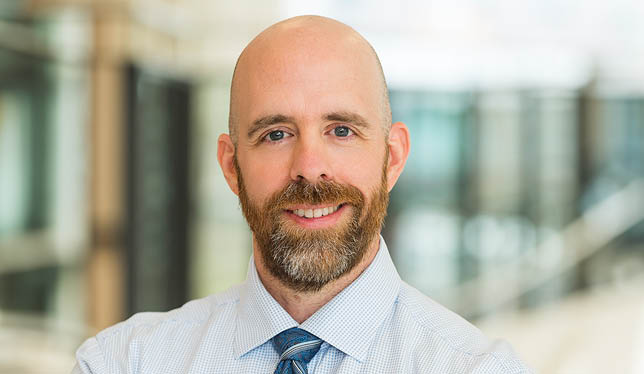Recognizing the intersectional nature of oppression is key to making universities more equitable
Looking at how BIPOC faculty are paid and treated when they first enter academia, and truly listening to them, would be a good first step in changing white privilege.

The Globe & Mail recently ran an in-depth investigative article, “Locked out of the ivory tower: how universities keep women from rising to the top,” which looks at the challenges faced by women — and especially women of colour and those with disabilities — in academic institutions as they try to rise through the ranks. The article, part of a series on the power gap between men and women, included a companion piece that analyzed salary and gender data at 15 Ontario universities from 1999 to 2019. In it, reporters Chen Wang and Robyn Doolittle persuasively argued that “[u]niversities have been promising to fix the sector’s gender problem for decades, but women are still under-represented at almost every level, particularly in decision-making roles, among full professors and senior faculty positions, and in the highest earning echelons.”
As a full professor at a Canadian university who landed a tenure-track job in 1999, I wasn’t surprised by the article’s findings. When I was hired, I did not receive credit for having completed a prestigious, year-long social sciences and humanities postdoctoral fellowship, because I did not pick up sessional teaching during that time. It would have been quite easy to come by, but I was advised to focus on writing and publishing to land a job. No explanation was given to me as to why I was denied credit, but after being granted early tenure and a promotion, and with the help of my chair, I fought to boost my pay retroactively to reflect the year I thought I had lost.
That experience prompted me to write a letter to the Globe & Mail following the publication of its article, lamenting that not much has changed. But my response felt entirely inadequate. It did not examine a complex and challenging aspect of making academic institutions more equitable, one that I have witnessed and been part of as a white female settler academic: the tendency to view the promotion of white women to positions of leadership as a triumph for universities, without examining how this often fails to address larger issues of equity, diversity, inclusion and decolonization (EDID).
While sexism remains a major problem within Canadian universities, the reality that Ms. Wang and Ms. Doolittle describe is more nuanced due to differences of class, race and sexual orientation, especially for those who are still regarded as visibly “other.” For me, it was only when I spent a semester abroad in 1991 during my undergraduate studies at McGill University that I had the opportunity to think long and hard about race relations and my own white privilege. At Duke University in North Carolina, my academic interests in Black and Indigenous writers led me to enroll in seminars where I was the only white person in the room, a radical shift from my experiences in Canadian classrooms dominated by white students and white (usually) male professors.
What I learned through that experience, and through my subsequent work with living Indigenous female authors, is the need to recognize the intersectional nature of oppression. The reality, I realized, is that although I continue to occupy space and assert power as a white woman, I may yet feel relatively powerless.
So how can postsecondary institutions, which continue to struggle to move women into the senior ranks of academia, do better at fundamentally changing the structures that continue to make them colonial entities, governed by white folks? And is promoting white women to the senior administrative ranks the best answer?
One way to begin might be to look at how BIPOC faculty are paid and treated when they first enter academia. As a former department chair and past president of the Association of Canadian College and University Chairs of English, I have seen BIPOC faculty too often hired before completing their PhD, and then paid at the level of instructor rather than assistant professor, teaching and researching while finishing their dissertation in record time. Despite the best intentions of hiring committees, chairs, deans, vice-presidents and presidents, these same hires are loaded down with service work because of the need to meet EDID goals that pay no attention to their impact on the very populations they are supposed to help.
What impact do these decisions have on the mental health, well-being, and financial future of these hires? How might BIPOC faculty be better protected so that they can finish their studies without distraction and then carry out the research that they want to pursue, rather than being mandated to lead EDID work or treated as resident experts on race relations? If we are truly committed to changing white privilege in the ivory tower, what mechanisms need to be in place for BIPOC hires to succeed and to become mentors? The tendency to see equity simply as a failure to include white women is far too narrow-minded to bring real diversity to the university sector. White women like myself need to recognize the importance of asking and listening to the thoughts and opinions of our BIPOC colleagues and students, without relying on their labour to re-envision universities as truly inclusive and decolonized, rather than merely appearing to be so.
Jennifer Andrews is a professor of English at the University of New Brunswick.
Featured Jobs
- Economics - Associate/Full Professor of TeachingThe University of British Columbia
- Indigenous Studies - Assistant Professor, 1-year termFirst Nations University of Canada
- Electrical and Computer Engineering - Assistant/Associate ProfessorWestern University
- Electrical Engineering - Assistant Professor (Electromagnetic/Photonic Devices and Systems)Toronto Metropolitan University














Post a comment
University Affairs moderates all comments according to the following guidelines. If approved, comments generally appear within one business day. We may republish particularly insightful remarks in our print edition or elsewhere.
7 Comments
Before we take Robin Doolittle at her word that women are being ‘locked out’ of the ivory tower in education, perhaps it is worth reading the letter to the editor in the Globe and Mail in response to Doolittle’s piece (from a Carleton University professor). It teaches all professors a lesson in media ethics:
“The evidence presented in this article shows the exact opposite of its central conclusions and what is asserted in its title. In every academic position and salary level, the share of women has increased dramatically over the past 15 to 20 years. Female full professors have risen from 9 per cent of the total in that category in 1999 to 31 per cent in 2019. Female assistant professors have increased from 29 per cent of total in 2004 to 46 per cent in 2019. In terms of salaries, women’s shares in every “salary band” or decile have been rising steadily. This indicates that new hiring is approaching and may have surpassed 50:50. It takes time for newly hired professors to move up the ranks to associate and full professorships and senior administrative positions. The evidence shows that this has been happening quickly. Far from women being ‘locked out,’ female professors are increasingly being hired and promoted at a surprisingly rapid rate.”
Arch Ritter, professor at Carleton University Ottawa
I am frustrated by academics talking about addressing systemic inequality and inequity in Canadian universities from an intersectional lens. Why? Because intersectionality in this nation excludes social class and therefore any nuanced class analysis. This article includes the mention of class once but there is no data to demonstrate who is sitting in tenured and upper-level administrative positions. Which white women are being promoted? Which BIPOC people are becoming tenured faculty and administrative leaders? Don’t bury the lead: This article in no way uses an intersectional lens. Let’s be honest here. If one is going to exclude social class, as do all EDI(D) university policies I have found to date, then don’t invoke Crenshaw’s intersectional theory. Moreover, when discussing EDI(D), frame it within the context of what shapes it: The Federal Employment Equity Act and what categories of people have been a non-legislated add-on. Then look at the history of failed poverty discrimination legislation in Canada. How many White women, particularly single moms, from generational poverty does anyone think even make it to university let alone to seats of power in our colonial universities? The homogenization of BIPOC and White people remains mind boggling to me particularly by academics.
If you really want to understand the function of class at a university, the real story concerns the exploitation of part-time professors, who make up 60% of the staff and live on poverty wages, with no benefits, no pension, and no job security. Class can never be addressed properly until that fact is given broader coverage.
Absolutely!!!!! I know there are universities where the number is way higher. I watch university job trends and the rapid fire move to a gif economy which is being normalized. For instance, “assistant prof” positions that are one semester or maybe two sessional positions. Most university jobs are temporary. Post doc jobs sell a fantasy that somehow you will be the lucky one out of thousands to land a tenure-track position. I learned that the post doc is now called the “perma doc.” Undergrads need to be taught what is happening to thousands of sessionals, who as you rightly point out, are pushed into poverty yet expected to teach and give their all
Algonquin College in Ottawa hit 72% part-time professors and then went on strike. They had had enough of planned poverty and planned inequality.
This is such an important point. Yes, students would be irate if they knew this. It affects the quality of their learning experience. Contract instructors are hired at the last minute (including the week before the course starts). We’re piecing together our livelihoods, have 10 years of student debt and often have no access to the same supports/benefits as our permanent colleagues. By the time our students get contact with us, we’re beaten down, anxious about our finances. They’re not getting our best selves.
And it will not change. It is in the financial interests of the university to keep a permanent class of professors at the lowest level of income. The universities talk a good game about fairness and inclusion, but it stops at the door of the part-time professor. They are considered role players and expendable.